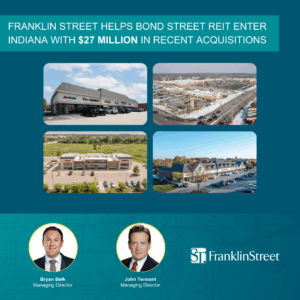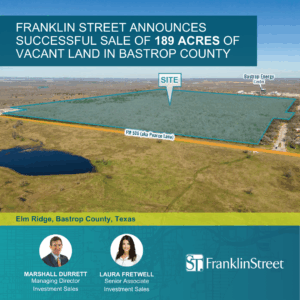Planners trying to figure out how to save struggling shopping centers
For every Lenox Square in metro Atlanta, there’s a Gwinnett Place mall.
One is full of swanky, trendy shops. The other is burdened with vacancies and surviving with a ragtag assortment of discount shoe shops, beauty supply stores and other non-traditional tenants.
Retail experts say about one-third of Atlanta’s roughly 17 malls are thriving, while another third is struggling.
The middle ground is occupied by the Stonecrest Malls of the world, which struggle to keep ubiquitous chain stores, such as the Gap and Starbucks, but are bolstered by big anchors.
The health of the area’s malls, in decline for years, is important because shopping is a huge draw for metro Atlanta’s $12 billion hospitality industry. Visitors to the area spent more than $1.7 billion in 2012, according to the Atlanta Convention and Visitors Bureau.
“The malls that are surviving here are the ones in affluent areas,” said Ellen Dunham-Jones, a professor of architecture and urban design at Georgia Tech who studies dead malls and mall redevelopment.
The Gwinnett Place Community Improvement District has proposed removing the roof of Gwinnett Place and redeveloping the mall as a town center, with walkable streets and a mix of office buildings and shops. Another option calls for simply updating the mall.
Hendon Properties, owner of North DeKalb, is considering a similar town center move.
For years, the trend was to build large, air-conditioned malls with thousands of parking spaces and easy access to restaurants. At that time, only well-established chains made their way into the malls. The trend culminated in metro Atlanta with the 1999 opening of the Mall of Georgia in Buford, one of the largest shopping centers in the Southeast.
But over the past 10 years, consumers have trended away from malls, focusing more on open-air “power centers” or discount outlet centers like Dawsonville’s North Georgia Premium Outlets. One of the newest open-air shopping centers – the much delayed, $1 billion mixed used project Buckhead Atlanta, which will feature upscale stores such as Hermes – held a “topping out” ceremony Friday. The center’s developers invited the public to watch the installation of the last vertical steel beam in the construction.
“It’s all about perceptions, and consumers think they are getting a bargain at outlets,” said Monetha Cobb, a retail analyst and managing director of Franklin Street Real Estate. “Outlets have grown where mall development has almost ground to a halt.”
Plus, one-time staples such as bookstores, record shops and greeting card outlets have all but disappeared. Others, such as Gap and Claire’s, re-evaluated during the recession and pulled out of underperforming mall locations.
That’s not to say there isn’t life left in malls. Some boast destination retailers that are hard for power centers or shopping districts to attract. The strongest malls include an Apple store, a sign of good health given the tech giant’s cache. Sometimes, developers will try to pique retailer’s interest in their project by insinuating that they got an Apple store in the bag.
Malls traditionally have been designed to attract shoppers using food courts and teen apparel. That made sense a decade ago, when 40 percent of households included children, Dunham-Jones said. But consumer demographics are changing. Today, the number of households with children has dropped to roughly 33 percent.
The biggest hit to malls, however, has come from department store operators. Chains such as JCPenney, Sears and Lord & Taylor have scaled back mall occupancy, while past players, such as Rich’s, have been bought by other retailers. That left malls with hundreds of thousands of square feet of empty two- or three-story buildings.
Many Atlanta malls, including South DeKalb, North DeKalb and Southlake Mall, have only one or two department store anchors – which traditionally brought in the most foot traffic – compared to the four that was traditionally in the 1980s and 1990s.
At Decatur’s North DeKalb, the losses are noticeable. The big department store boxes have been replaced by Burlington Coat Factory, Ross Dress for Less and Marshalls, although Macy’s still operates there. The smaller stores, however, include wig stores, a workout studio and local retailers. The one-story mall feels more like a strip shopping center than a major retail destination.
Charlie Hendon, whose company Hendon Properties owns North DeKalb, said the mall makes money and that he is proud of its tenants. But he said the mall is too small to compete with its bigger brethren and that his company plans to transform it into a “live, work, play” community by removing the roof and reconfiguring its entire footprint.
He said the company has wanted to finance a redevelopment for some time but waited to avoid paying a penalty for an early loan payoff. Hendon is in the process of paying off the loan now and hopes to announce plans for the mall in the next two years.
“We’ve been sort of treading water on purpose,” he said.
Some malls have managed to bounce back.
Ten years ago, Cumberland Mall in Cobb County was at a turning point. JCPenney, one of its anchor department stores, was underperforming and eventually would be razed. Two other anchors, Macy’s and Rich’s merged into one store, leaving more unused space.
At the same time, Town Center at Cobb, a newer mall in Kennesaw that was closer to the county’s population growth center, was nipping at Cumberland’s heels.
In 2006, Cumberland underwent a $70 million expansion, adding with restaurants, including Cheesecake Factor, Maggiano’s Little Italy and Ted’s Montana Grill. It also added a Costco location. Today parking is often difficult to find at the shopping outlet.
“Retail is an ever-changing industry,” said Lee Tharp, manager of Cumberland, which turned 41 years old last year. “You keep a mall young by upgrading it.”
Even those that have prospered know they cannot rest on their laurels. Buckhead’s Lenox Square, arguably metro Atlanta’s leading mall, is undergoing a rehabilitation of its façade, adding new stores and an outdoor patio to its food court. Its competitors are projects such as Buckhead Atlanta, Avalon and Ponce City Market, which are trying to attract luxury shoppers.
Robin Suggs, Lenox Square’s manager, is diplomatic about the competition. Buckhead Atlanta and others will complement Lenox, helping raise the area’s profile more than creating battles for high-end retailers, she said.
Sister Buckhead property Phipps Plaza landed a Legoland Discovery Center a few years ago to draw families and upgraded its move theater with reclining seats and an expanded concession stand.
“We are always evolving,” Phipps manager Dewayne Herbert said. Download PDF



